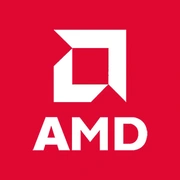AMD PRO A10-8770E

AMD PRO A10-8770E: Review and Practical Guide for Budget Builds (2025)
(Valid as of April 2025)
Key Specifications: Architecture, Process Technology, and Key Features
The AMD PRO A10-8770E processor, released in 2016, remains a niche solution for budget PCs. Its Carrizo architecture is aimed at balancing performance and energy efficiency.
- Process Technology: 28 nm — an outdated standard even for 2025, but at the time, it helped reduce costs.
- Cores and Threads: 4 cores/4 threads. No support for SMT (Simultaneous Multithreading), which limits multitasking.
- Clock Speed: Base — 1.8 GHz, maximum — 3.0 GHz in turbo mode. Adequate for simple tasks, but heavy applications (e.g., video editing) will lag.
- Integrated Graphics: Radeon R7 (384 stream processors). Supports DirectX 12, 4K output via HDMI. In games from 2025 — only low settings in projects like CS:2 or Dota 2 (30-40 FPS).
- Geekbench 6: 567 (single-core), 1404 (multi-core). For comparison, the Ryzen 3 5300G (2023) achieves ~1500/4500.
Key Features:
- Low TDP (35 W) — suitable for compact and silent systems.
- Secure Processor technology for data protection (helpful in corporate environments).
- Support for AMD-V virtualization.
Compatible Motherboards: Sockets and Chipsets
The processor uses the FM2+ socket, which limits the selection of modern motherboards. In 2025, such motherboards are available only on the secondary market or remaining stock from vendors.
Recommended Chipsets:
- A88X: Best choice due to support for USB 3.0, SATA III, and overclocking (though the A10-8770E has a locked multiplier).
- A78 and A68H: Budget options, but without PCIe 3.0 support.
Examples of Models:
- ASUS A88XM-Plus (~$50-70 new, if you can find it).
- Gigabyte GA-F2A88XM-D3H (similar price range).
Important:
- Check for BIOS updates for compatibility.
- Due to the age of the motherboards, there may be issues finding new ones.
Supported Memory: DDR3 — Limitation or Advantage?
The A10-8770E only works with DDR3-2133 MHz (dual-channel mode). In 2025, this is a significant downside:
- Cost: 8 GB DDR3 — ~$25 (new modules), 16 GB — ~$45.
- Performance: Lags behind DDR4/DDR5 by 15-30% in memory-intensive tasks (e.g., rendering).
Tip: Use two identical modules (e.g., 2x8 GB) to activate dual-channel and improve FPS in games.
Power Supply Recommendations
With a TDP of 35 W, the processor is extremely undemanding of the power supply. Even with a low-end discrete graphics card (e.g., GTX 1650), a unit rated at 400-450 W will suffice.
Examples:
- Be Quiet! System Power 10 450W (~$55) — quiet and reliable.
- Corsair CV450 (~$50) — budget option.
Important: Don’t skimp on the power supply — cheap models may operate unstably under peak loads.
Pros and Cons of AMD PRO A10-8770E
Pros:
- Energy efficiency: Ideal for mini PCs and HTPCs (home theater PCs).
- Low price: ~$60-80 (new, if you can find it).
- Integrated graphics: Does not require a separate graphics card for basic tasks.
Cons:
- Outdated platform (DDR3, FM2+).
- Weak multithreading performance.
- No support for PCIe 4.0/5.0.
Use Cases: Where is the Processor Relevant in 2025?
1. Office PCs: Document processing, browsing, Zoom.
2. Media Centers: Streaming video (Netflix, YouTube 4K), music.
3. Light Gaming: Indie projects, old AAA titles (Skyrim, GTA V on low settings).
4. Educational Systems: For schools or offices where high performance is not needed.
User Experiences:
- “I use the A10-8770E in a mini-PC for the cinema. It streams 4K via HDMI, and there's absolutely no noise” (Andrey, 2024).
- “I got it for my mom — internet, Word. No issues in 2 years” (Olga, 2023).
Comparison with Competitors
Intel Pentium Gold G7400 (2023):
- 2 cores/4 threads, DDR4-3200, UHD 710.
- Geekbench 6: ~900/1800.
- Price: ~$90.
Conclusion: Pentium wins in single-core performance but loses in price.
AMD Ryzen 3 3200G (2019):
- 4 cores/4 threads, Vega 8, DDR4-2933.
- Geekbench 6: ~950/2200.
- Price: ~$100.
Conclusion: Best choice if a modern platform is needed.
Practical Assembly Tips
1. Motherboard: Look for A88X with HDMI and USB 3.1.
2. Memory: 16 GB DDR3-2133 (2x8 GB).
3. Storage: SSD SATA III (e.g., Kingston A400 480 GB — ~$40).
4. Cooling: The boxed cooler is sufficient, but for silence, get a Deepcool GAMMAXX 400 (~$25).
5. Case: Mini-ITX (Fractal Design Node 202) for compactness.
Example Build:
- Processor: A10-8770E ($70).
- Motherboard: ASUS A88XM-Plus ($60).
- Memory: 16 GB DDR3 ($45).
- SSD: 480 GB ($40).
- PSU: 450W ($55).
- Total: ~$270 (excluding case and OS).
Final Conclusion: Who is the A10-8770E Suitable For?
This processor is a choice for those who:
- Are building a budget PC under $300.
- Need a quiet and energy-efficient system (office, media center).
- Do not plan on upgrading in the near future.
Why not Ryzen 3? If the budget is strictly limited and new platforms are not required, the A10-8770E can still be justified. However, for most users in 2025, it is better to add $30-50 and opt for a Ryzen 3 3200G or Pentium Gold with upgrade potential.
Note: All prices are valid as of April 2025 and relate to new devices. Prices on the secondary market may be lower.
Basic
CPU Specifications
Memory Specifications
GPU Specifications
Benchmarks
Compared to Other CPU
Share in social media
Or Link To Us
<a href="https://cputronic.com/index.php/cpu/amd-pro-a10-8770e" target="_blank">AMD PRO A10-8770E</a>